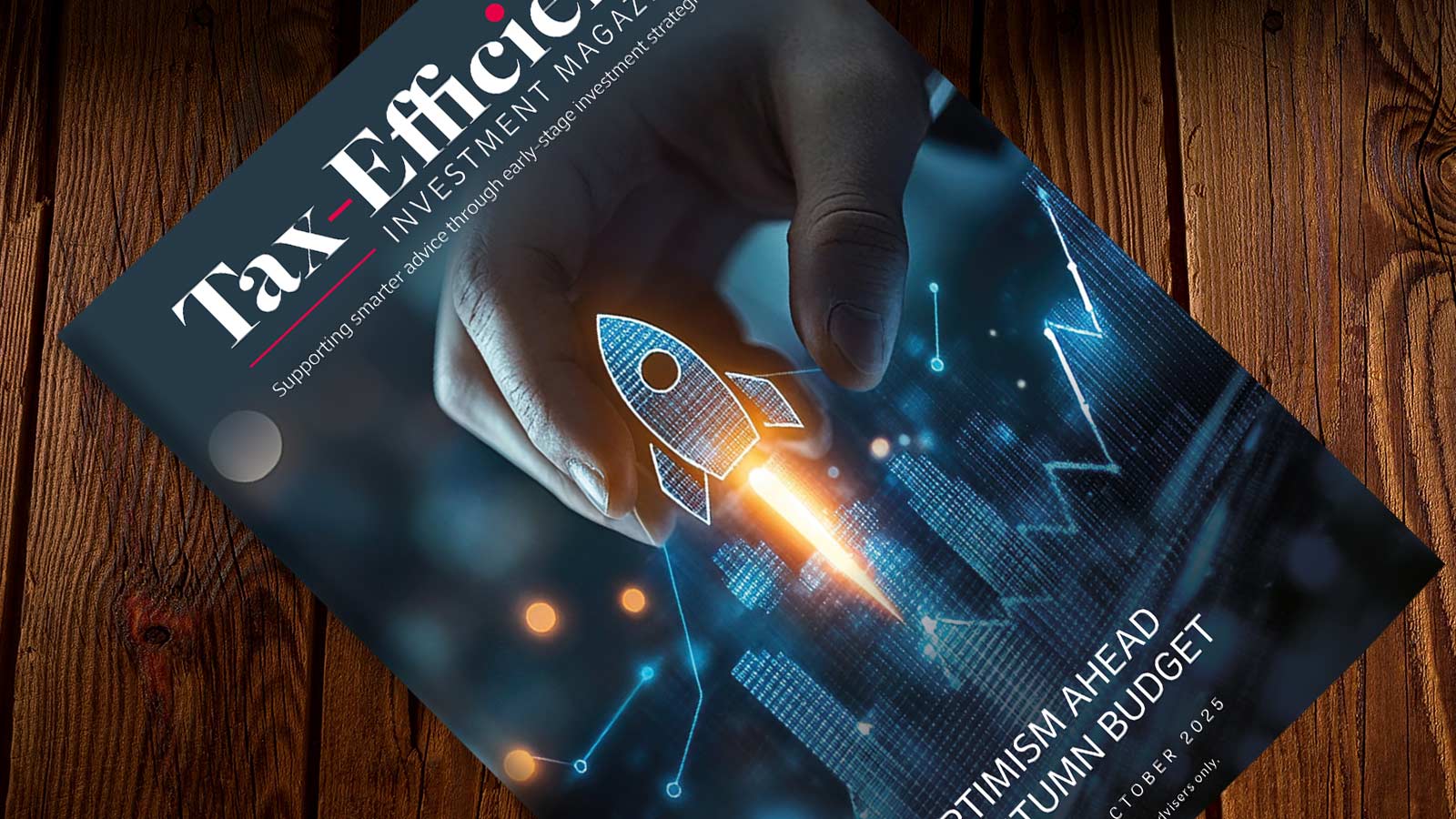In the next instalment in our series of exclusive interviews with industry experts, Glen Stewart, Head of Intermediated Capital Raising at Committed Capital, provides his insight on the biggest growth opportunities and most common risks for investors, and discusses his company’s approach to investing.
1.) What tax-efficient schemes does your company work with, and how do you offer a unique/compelling approach for advisers?
We have been investing in EIS-qualifying companies since 2001, and have both a Growth EIS Fund which was recently awarded 5 star and 5 Diamond Defaqto ratings, and an HMRC-approved Knowledge-Intensive EIS Fund. From a performance perspective, third-party reviewers tell us that we have one of the best track records in the industry.
To date, our Committed Capital Growth EIS Fund, established in 2014, has achieved an average 3x ROI (excluding any tax reliefs) and a 36.8% IRR for investors with an average holding period of 4.5 years. This is in line with the Fund’s target of 3x ROI and well ahead of the target 25% IRR.
Our Knowledge-Intensive EIS Fund follows the same investment strategy but with a quicker targeted deployment of just 3 months following the end of the tax year.
2.) How active are you in providing education to advisers on the types of clients that are suitable for these types of investments, as well as any changes in regulation or nuances in the existing rules?’
We are members of the EIS Association and their tax and technical committee brief us on any legislative changes, such as the recent extension to the EIS legislation announced in the Autumn Budget 2023. We share all relevant updates with clients and our strategic partners.
We are very active in providing education to advisers on the application and interaction of the various generous tax reliefs afforded by the EIS regulations, and often present and discuss various client scenarios with advisers and wealth managers. Income Tax relief of 30% is often the relief that attracts the most attention; however, the various tax reliefs when used in conjunction with one another, can potentially be used as a very effective investment and tax planning strategy.
Being aware of various planning scenarios can be a good way for advisers to bring additional value add to their clients, and to win new business from professional connections, such as accountants and solicitors. Some typical scenarios we see and often discuss include complimentary retirement planning, Capital Gains deferral and Inheritance Tax planning, remittance planning for UK Resident, Non-Domiciled clients, and tax and investment planning for entrepreneurs disposing of businesses.
3.) Where and in which types of companies are you seeing the biggest growth opportunities?
We have offered three categories of growth opportunity below but would note that these are not mutually exclusive and we are more than happy if we can identify more than one theme in any investment opportunity. Broad areas as follows:
Tech driven opportunities. New tech emerges at an increasing pace; the challenge is to identify commercial applications for high impact tech. GenAI is a good example of a new technology the impact of which is widely misunderstood; from our perspective, the opportunity lies in new vertically focused GenAI capability rather than in some of the first to market unfocused Gen AI tools. Tech arbitrage is less sexy but can be equally positive from an investment perspective. This opportunity arises when it is clear that sectors or segments are not using current tech optimally – we note that some segments of insurance and fintech markets lag some way behind optimal tech adoption.
Market driven opportunities. Rapidly changing or growing markets give rise to investment opportunities – workplace technologies/healthtech/ IoT for homes and businesses are good examples. Fast growing markets such as cyber security (and ancillaries such as cyber insurance) are promising. Climate tech continues to be a growth opportunity – Europe’s Green New Deal will be influential in turning environmental obstacles into growth opportunities via investment. In edtech, most recent developments will change the learning environment and help to reduce the costs of education. Analytics will help teachers identify and improve upon learning habits, VR devices will provide students with an immersive learning experience and Gen AI will be used by students in a variety of ways to improve the learning experience.
Driven by legislation/government intervention. Incoming legislation can result in dramatic change within sectors – the impact of GDPR on digital marketing strategies is a good example leading to the phasing out of cookie based advertising over the next few years. The recent introduction of Pharmacy First in the UK, empowering pharmacists as the first port of call for diagnostics, is a significant opportunity for pharmacy platforms.
4.) What do you see as the biggest risks for investors?
Making losses on investments, exit risk and tax risk. Statistically, smaller seed stage companies fail more often than larger, established companies which is why the EIS legislation extends such generous tax reliefs to investors to help mitigate this risk and incentivise investment into companies that struggle to find capital from other sources. Smaller companies may fail for a variety of reasons including, but not limited to, they may initially be more reliant on fewer customers, they may have less capital available to grow or withstand a downturn, they may take longer to bring new products or services to market and become profitable.
From an exit perspective, investments must be held for a minimum of 3 years to retain the 30% income tax relief and avoid clawback, but the reality is that investors should expect to hold EIS qualifying investments typically for 4 to 7 years depending on market conditions.
Looking at tax risk, it is important to establish that the underlying investments have advance assurance from HMRC. This is confirmation from HMRC that based upon information submitted by the company that investments into that company are eligible under the scheme. Secondly, it is also important to ensure that the company remains EIS qualifying for at least the minimum 3 year holding period for income tax purposes.
These risks can be mitigated, to some extent, by selecting a fund manager with a proven investment strategy, well grooved in and disciplined processes, a good exit track record, an investment strategy targeting growth-stage post revenue companies rather than earlier seed stage companies, and managers who have a representative sitting on the board of their portfolio companies.
We sit on the board of all our portfolio companies, which helps mitigate, but not eliminate these risks. We work with portfolio companies by committing capital to provide growth funding, and actively supporting them in areas such as corporate governance, marketing and sales strategies, financial modelling, and making strategic B2B introductions. From the beginning of our relationship with an investee company we consider potential exit opportunities which historically have in the main been in the form of a sale to a strategic buyer. Sitting on the board also means that we can ensure companies do not undertake any activities or acquire other companies that might inadvertently jeopardise their EIS qualifying status.
Finally, In addition to income tax relief, capital gains free growth, inheritance tax relief and the ability to defer the capital gains tax payable on other gains, EIS also offers loss relief if an investment fails. If an investor incurs a loss on their EIS investment, they can offset that loss against their taxable income in the year of loss or the proceeding tax year, or offset the loss against other taxable capital gains in the year of loss or carry the loss forward against future capital gains.
5.) Should advisers be worried about a lack of diversification, and why?
One of the most important investment strategies to employ for investors is portfolio diversification, with investments spread across different asset classes, industries, geographical regions and different fund managers to minimize risk and maximize returns. Adding alternative investments such as Growth Stage EIS qualifying companies to a well-balanced investment portfolio can provide a greater degree of portfolio diversification for the right investors.
EIS-qualifying investments offer investors the opportunity to diversify their portfolio into investments that are largely uncorrelated to the fluctuations of listed stocks and shares. By including EIS investments in an already balanced portfolio, investors can increase the diversity of their investments, reducing exposure to stock market volatility. Many companies looking for EIS funding are aiming for significant growth. For investors, it’s an opportunity to share in that success by buying shares in a business near the start of its growth journey.
EIS attracts businesses from across sectors, giving investors options to diversify and reduce risks by selecting companies they believe to have strong growth potential, are operating in untapped industries, or have a clear competitive edge. Smaller companies typically follow different investment cycles compared to other parts of the investment market. This means EIS can offer an extra layer of portfolio diversification for investors who are comfortable with the risk of investing in smaller companies.









![[UNS] tax](https://ifamagazine.com/wp-content/uploads/wordpress-popular-posts/788955-featured-300x200.webp)
![[uns] house of commons, parliament](https://ifamagazine.com/wp-content/uploads/wordpress-popular-posts/788873-featured-300x200.webp)




